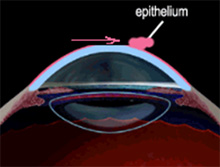Your wedding is coming up and you want your smile to be its brightest. Or maybe you have an important speaking engagement. Whatever the reason, tooth bleaching isn’t just for the movie stars, and it isn’t just for one day. Many people have had their teeth bleached, and probably millions more are thinking about it. The desire for a brighter smile with whiter teeth is very strong, and tooth bleaching safely lightens the color of the teeth, lasting for up to five years. The most effective and safest method of tooth bleaching is dentist-supervised.
Is bleaching for you?
Generally, bleaching is successful in at least 90 percent of patients, though it may not be an option for everyone. Consider tooth bleaching if your teeth are darkened from age, coffee, tea or smoking. Teeth darkened with the color of yellow, brown or orange respond better to lightening. Other types of gray stains caused by fluorosis, smoking or tetracycline are lightened, but results are not as dramatic. If you have very sensitive teeth, periodontal disease, or teeth with worn enamel, your dentist may discourage bleaching.
What’s involved in the process?
First, the dentist will determine whether you are a candidate for tooth bleaching and what type of bleaching system would provide the best results.
If you’re in a hurry for whiter teeth, you may decide to have your teeth lightened immediately. Your dentist will use either an in-office bleaching system or laser bleaching while you sit in the dental chair. However, most patients choose dentist-supervised at-home bleaching, which is more economical and provides the same results.
At the next appointment if you don’t choose laser bleaching, the dentist or hygienist will make impressions of your teeth to fabricate a mouthguard appliance for you. The mouthguard is custom made for your mouth and is lightweight so that it can be worn comfortably while you are awake or sleeping. The mouthguard is so thin that you should even be able to talk and work while wearing your mouthguard. Along with the mouthguard, you’ll receive the bleaching materials. You’ll be given instructions on how to wear the mouthguard.
Some bleaching systems recommend bleaching your teeth from two to four hours a day. Generally this type of system requires three to six weeks to complete, and works best on patients with sensitive teeth. Other systems recommend bleaching at night while you sleep. This type of system usually requires only 10-14 days to complete.
How long does it last?
Lightness should last from one to five years, depending on your personal habits such as smoking and drinking coffee and tea. At this point you may choose to get a touch up. This procedure may not be as costly because you can probably still use the same mouthguard. The re-treatment time also is much shorter than the original treatment time.
How does it work?
The active ingredient in most of the whitening agents is 10 percent carbamide peroxide (CH4N2O2), also known as urea peroxide; when water contacts this white crystal, the release of hydrogen peroxide lightens the teeth.
Is it safe? Any side effects?
Several studies, during the past five years, have proven bleaching to be safe and effective. The American Dental Association has granted its seal of approval to some tooth bleaching products. Some patients may experience slight gum irritation or tooth sensitivity, which will resolve when the treatment ends.











